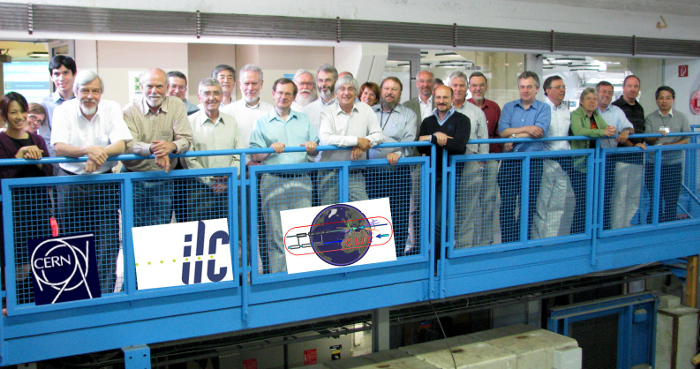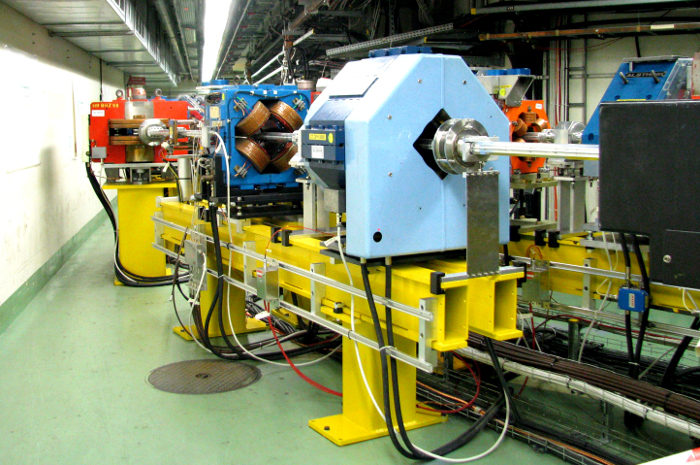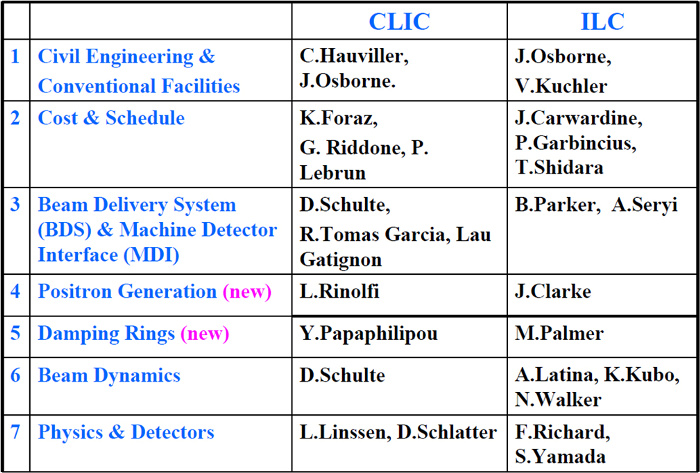Director's Corner
18 June 2009
 Barry Barish |
A step at a time
Last week we held the first ever joint meeting of the GDE Executive Committee and the CLIC Extended Steering Committee. This meeting at CERN represented another step in bringing the CLIC and ILC efforts closer together. CERN's Director General Rolf Heuer, the CERN Research Director Sergio Bertolucci and the Secretary of the CERN Council Strategy Group, Steiner Stapnes, attended part of the meeting and expressed their support. The meeting itself was constructive and productive in that we agreed on several important new initiatives, including plans to combine future workshops and to begin discussions on developing and articulating a joint strategy towards a linear collider.
 A group photo of the CERN management, ILC Executive Committee and CLIC Steering Committee A group photo of the CERN management, ILC Executive Committee and CLIC Steering Committee |
 The CLIC two-beam concept The CLIC two-beam concept |
 CTF3 Combiner Ring CTF3 Combiner Ring |
Although ILC NewsLine is dedicated primarily to communicating the R&D and design efforts for the ILC, this programme needs to be viewed in the context of the broader efforts towards a next-generation lepton collider. The other major effort is the Compact Linear Collider Study (CLIC), a longer-timescale R&D programme aimed at developing a different technological approach that is potentially capable of achieving multi-TeV collisions. There are also R&D efforts towards developing a multi-TeV muon collider on yet a longer timescale.
In one sense these efforts are in competition with each other, each one has dedicated proponents and teams and works hard to develop the competing technologies but, in a more overriding sense, we are all working towards the same goal, to prepare for the next energy frontier machine for our field. Independent physics studies in Asia, the Americas and Europe have each given the highest priority for the future of the field to develop a lepton collider complementing the LHC while fully exploiting the Terascale. These parallel R&D programmes are all needed to determine the technical capabilities, readiness, risks and costs of these options, while the LHC discoveries will determine the desired technical requirements. If these results confirm the energy scale of the ILC, the technical and design work will be mature enough to propose the ILC while, if higher energy is needed, an increased R&D effort can be made towards CLIC or maybe a muon collider.
The CLIC multi-TeV concept, as presently conceived, uses a radiofrequency (RF) of 12 GHz, a gradient of 100 MeV/metre and employs room temperature travelling wave structures for acceleration. CLIC uses an innovative two-beam concept to provide sufficient RF power, thereby eliminating the use of klystrons and enabling potentially higher gradients and higher energies. Much of the R&D for CLIC is dedicated towards a crucial feasibility demonstration called CTF3 which is being carried out on a major test facility developed at CERN by a worldwide collaboration of 27 institutions. In addition to the demonstration programme, an effort is underway to develop a CLIC Conceptual Design Report by the end of 2010.
Although the CLIC technology for the main linac is totally different from the superconducting RF technology for ILC, other aspects of the design, including the sources, damping rings, beam delivery and detectors have large overlaps. For that reason, last year we initiated a set of joint working groups in those areas where we can pool our resources and work together for the benefit of both teams. Two of the joint working groups are of special interest: a group on civil engineering and conventional facilities and one on cost and schedule. The engineering and conventional facilities group is dealing with common ILC and CLIC problems, such as access and safety, details of underground tunneling, as well as various specific siting issues. The cost schedule group, although using different costing tools, is working to use common methodologies that will help enable whatever cost comparisons are needed to evaluate the two technologies.
During the meeting last week we reviewed the progress of our joint working groups, and discussed future plans and ideas for specific work and deliverables for these groups. In addition to the obvious benefits of combining resources for joint problems, we have agreed on some other new longer-term goals. In particular, we have agreed to take a step towards bringing our managements closer together, by adding a CERN/CLIC representative as a member of the GDE Executive Committee and vice versa for the equivalent CLIC committee. Another step we have agreed upon is to investigate integrating our major CLIC and ILC workshops beginning in the autumn of 2010.
Finally, these may all seem like small steps, and they are. But they do represent steps towards bringing the ILC and CLIC efforts closer together, and we are hopeful that such steps will incrementally lead to our jointly developing and articulating a joint strategy for a linear collider. As a more personal comment, I believe that an important benefit of bringing the CLIC and ILC efforts closer together will be that when the project goes forward, we will quite naturally be able to join forces around whatever technology is used for a future linear collider.
-- Barry Barish
